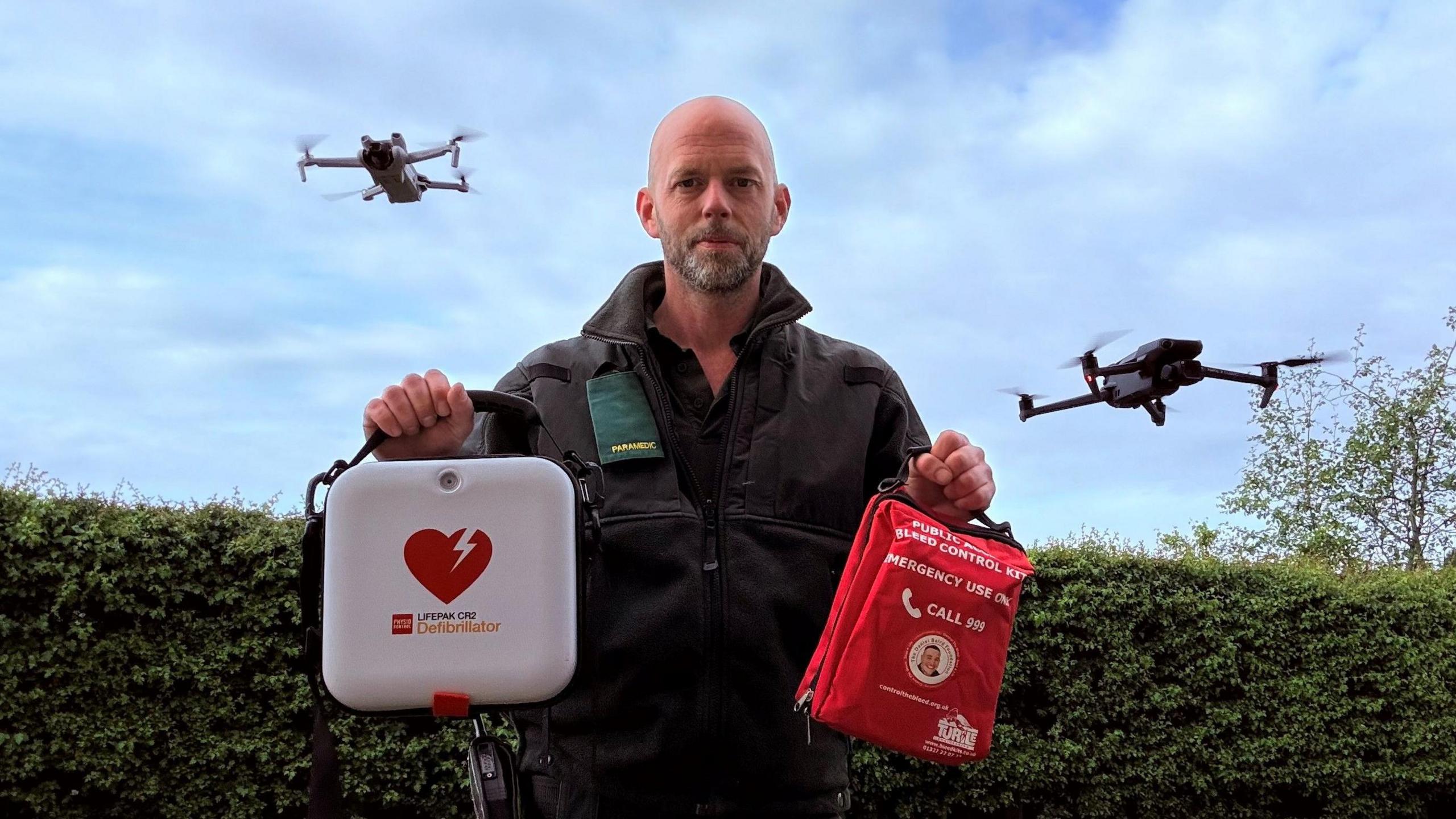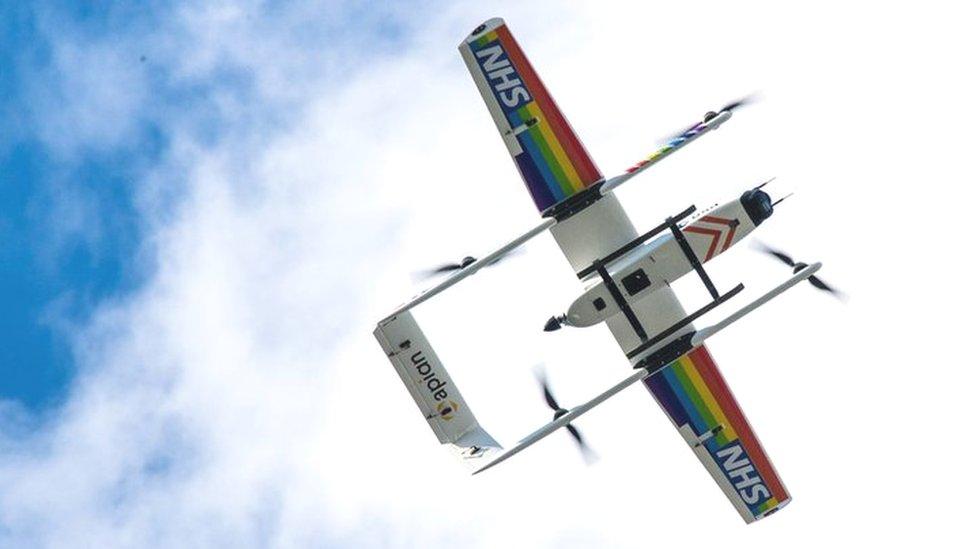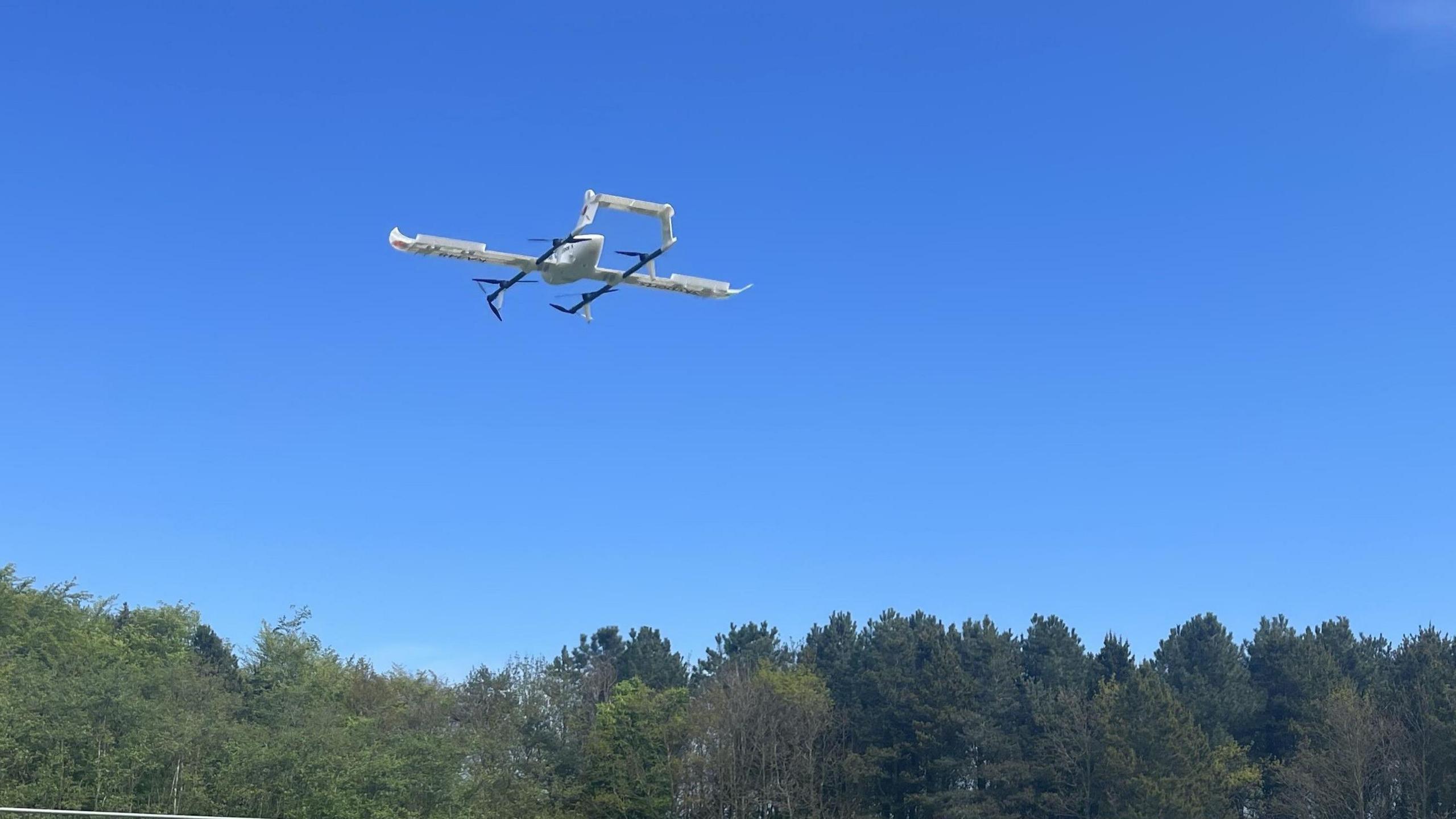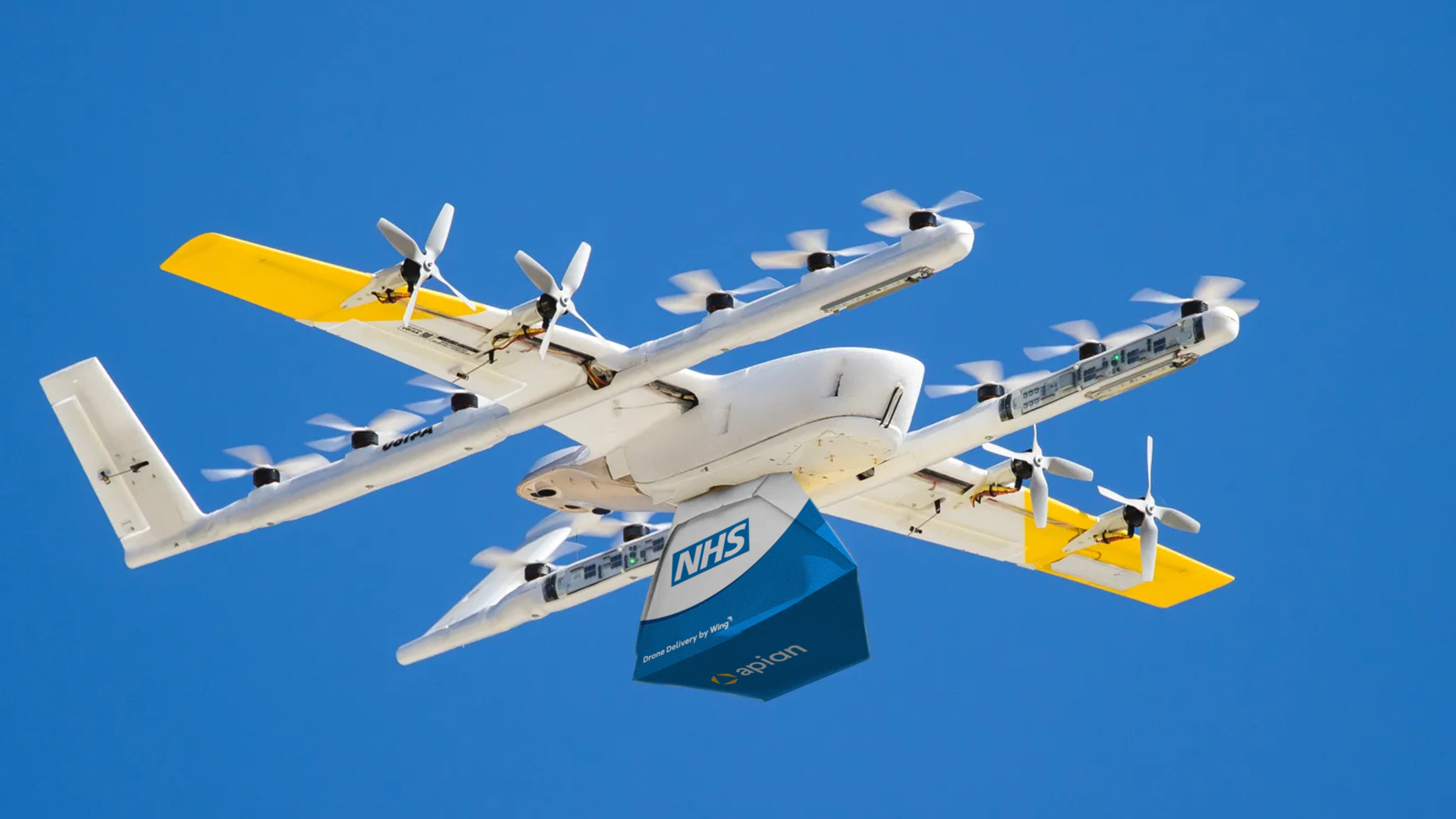Paramedic says drones could help save lives

Trevor Wain wants drones to fly life-saving equipment across Lincolnshire
- Published
A paramedic wants to get a project off the ground that would see drones fly life-saving equipment to medical emergencies.
Trevor Wain, from Market Deeping in Lincolnshire, said defibrillators, EpiPens and catastrophic bleed kits were just some of the things that could be flown so that first responders or members of the public could use them until an ambulance arrived.
He said: "For every minute someone's in cardiac arrest, their chances of survival drop by 10%. Even if the ambulance gets there within seven minutes, if you get a drone there two minutes earlier, they've got a 50-50 chance."
He has applied to the Civil Aviation Authority for a licence so that he can trial the project.
Mr Wain has been a paramedic in Lincolnshire for 10 years and said the county's rural geography could make it challenging to reach emergencies quickly.
He added: "From one scene to another is miles and miles of fields, so drones are the future for getting equipment to the scene quicker."
According to Mr Wain, the plan would see drones fitted with two-way communication and a camera "like smart doorbells", so clinicians could reassure members of the public using the equipment.
He said a recent incident made him realise the impact drones could have.
"The defibrillator that was available, it took a long time for them to get it and when they opened it, it had no pads in it. In situations like that, a drone could have really made a difference," he said.
Community defibrillators
East Midlands Ambulance Service (EMAS) works with organisations such as the British Heart Foundation and national defibrillator database The Circuit to expand access to community defibrillators.
Mick Barnett-Connolly, head of community response, collaboration and engagement at EMAS, said the trust also gave advice to people wanting to install defibrillators in their communities, and used community training volunteers to teach people CPR.
He said: "It's well documented that to give someone the best chance of survival after a cardiac arrest in the community, immediate, high-quality CPR needs to be given as soon as possible, ideally by a confident bystander."
Pilot projects are under way elsewhere in the UK to trial using drones to transport blood or chemotherapy.
Mr Wain said he had been approached by United Lincolnshire Hospitals Trust about other possible uses for the technology, should his project take off.
- Published5 July 2022

- Published21 August 2024

- Published17 September 2024
